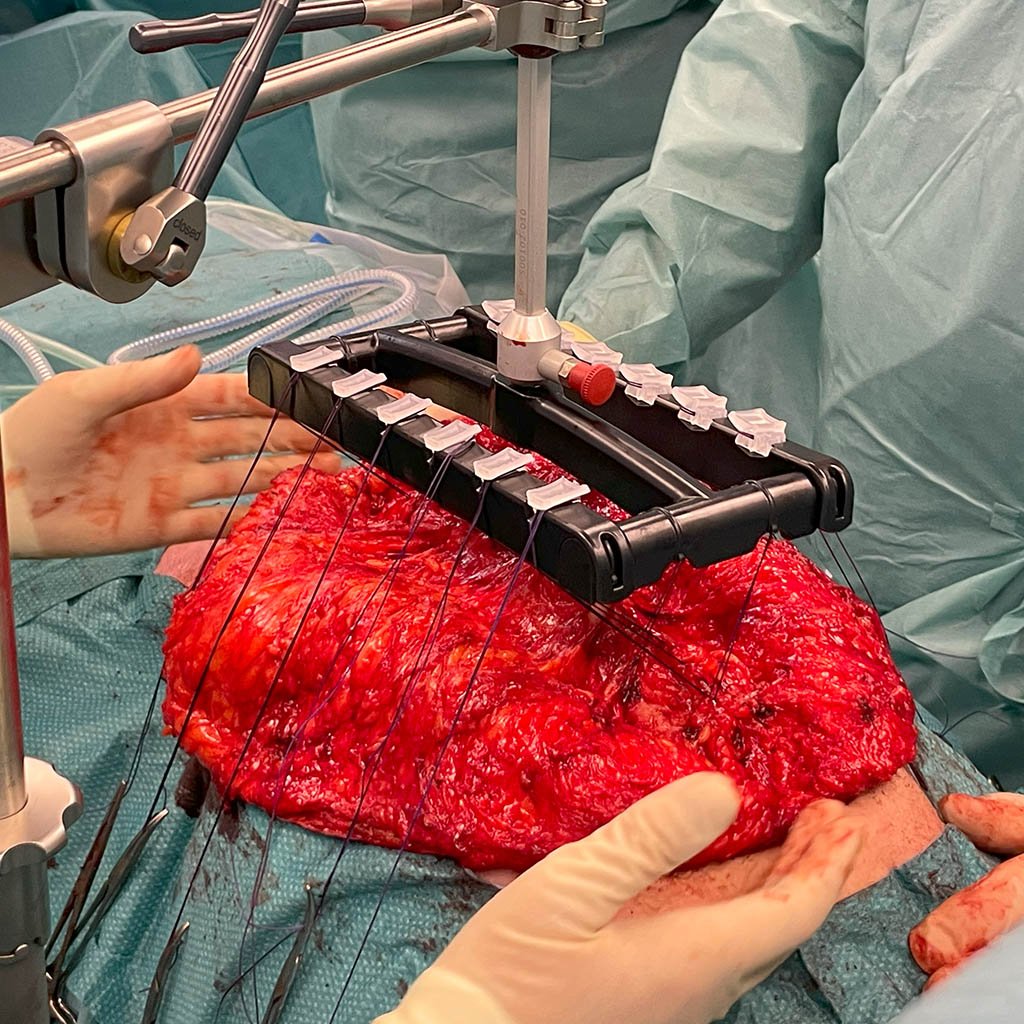
Midline closure after only 25 minutes
25 cm recurrence of a ventral incisional hernia
Slingeland Hospital, Doetinchem, Netherlands - October 2023
Susan Lemson and Bastiaan Wiering treated this patient with a giant ventral abdominal wall hernia. The patient already went through multiple procedures over a timeframe of 10+ years before coming to the hernia specialists at Slingleland.
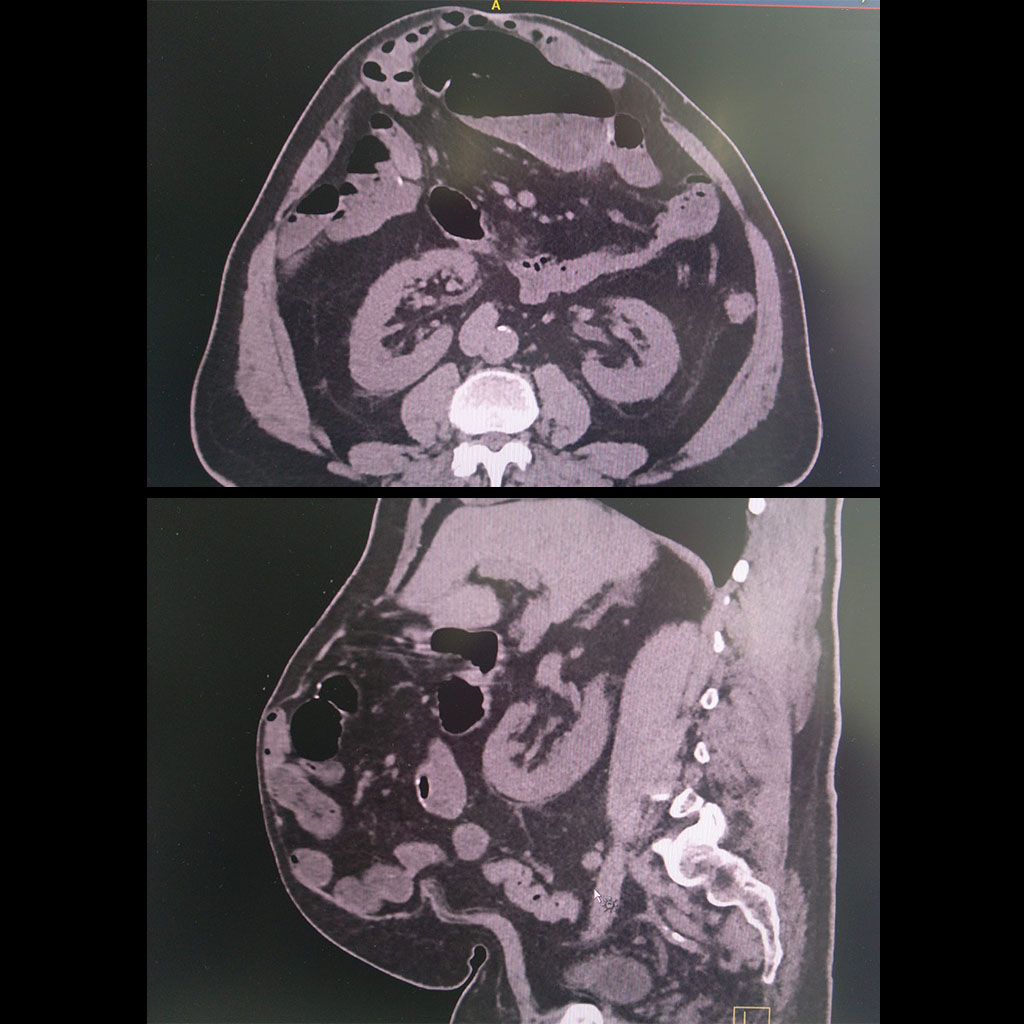
CT scan
Preoperative CT shows the hernia to have a laterolateral diameter of 25 cm.
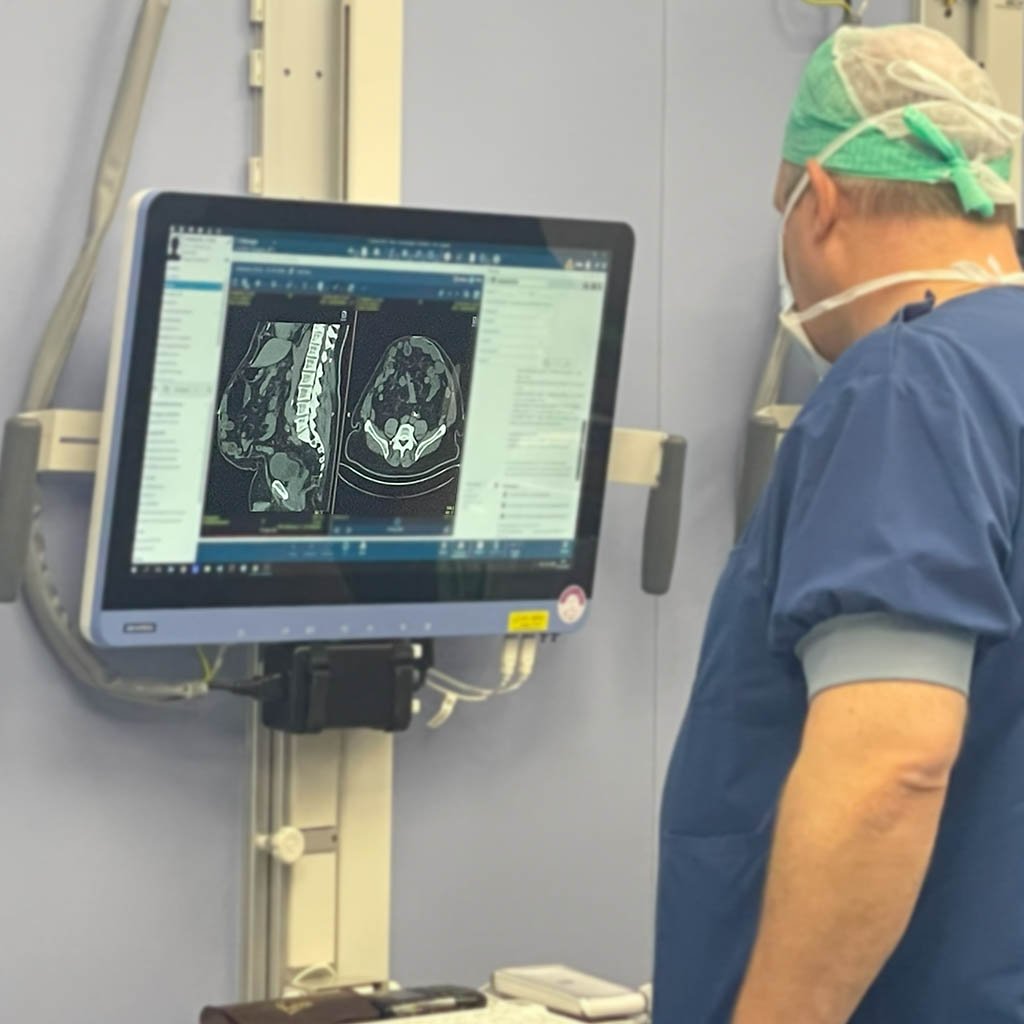
Pre-treatment with botulinum toxin (BTA)
The patient received BTA injections 4.5 weeks prior to the hernia repairs. The result was as desired as the abdominal wall was floppy and relaxed.
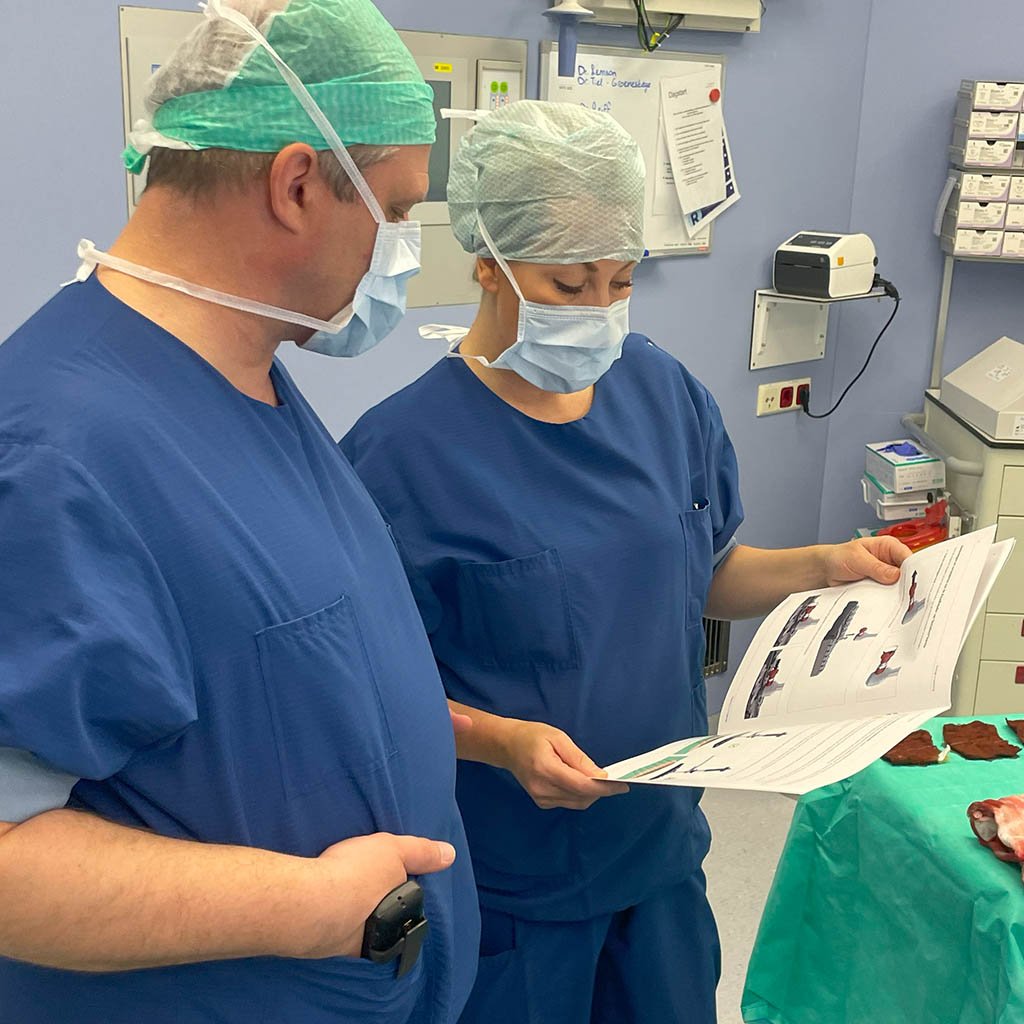
Full relaxation during anaesthesia
The patient was under general anaesthesia with relaxant on a drip (perfusor). Full relaxation during Intraoperative Fascial Traction (IFT) is an important step to achieve the greatest possible stretching of the abdominal wall during the treatment.
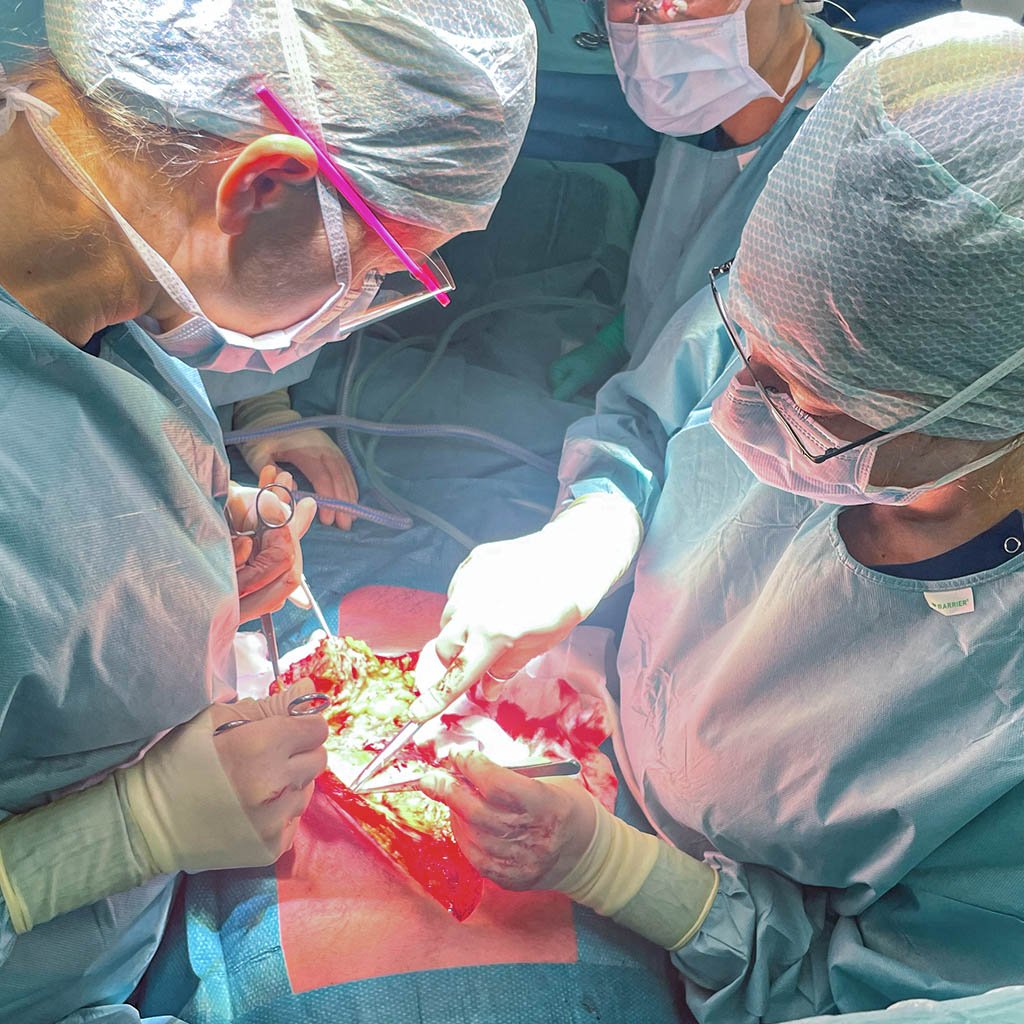
Releasing adhesions
The patient had severe adhesions due to multiple previous operations. A part of the hernia sack was preserved to bridge the posterior rectus sheet and to cover the abdominal cavity.
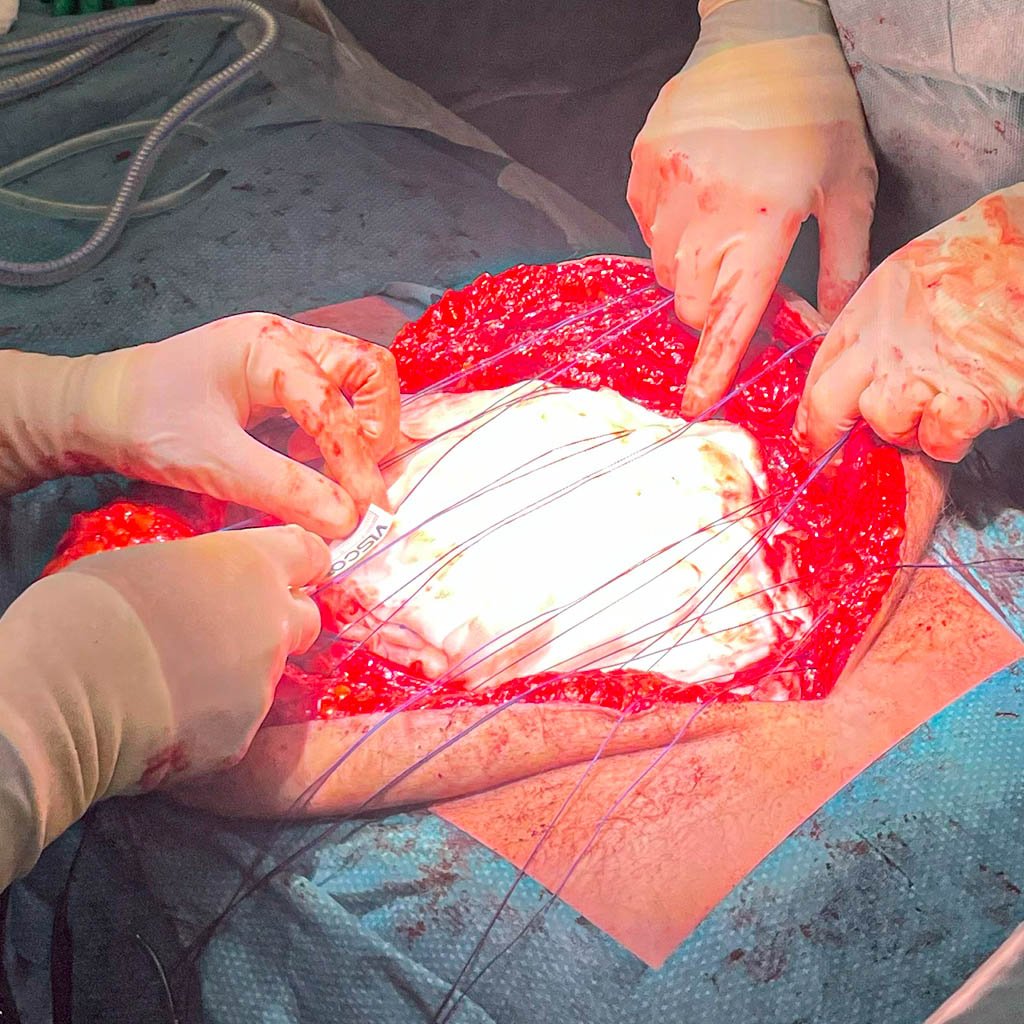
Attaching the sutures to the fascia
The sutures (multifilament, braided, uncoated, USP 2) are stitched as U-sutures to exposed anterior sheet of the rectus sheath with approx. 2 cm distance to the fascial edge. 6 sutures are used per side. The team took care to attach the sutures evenly along the fascia.
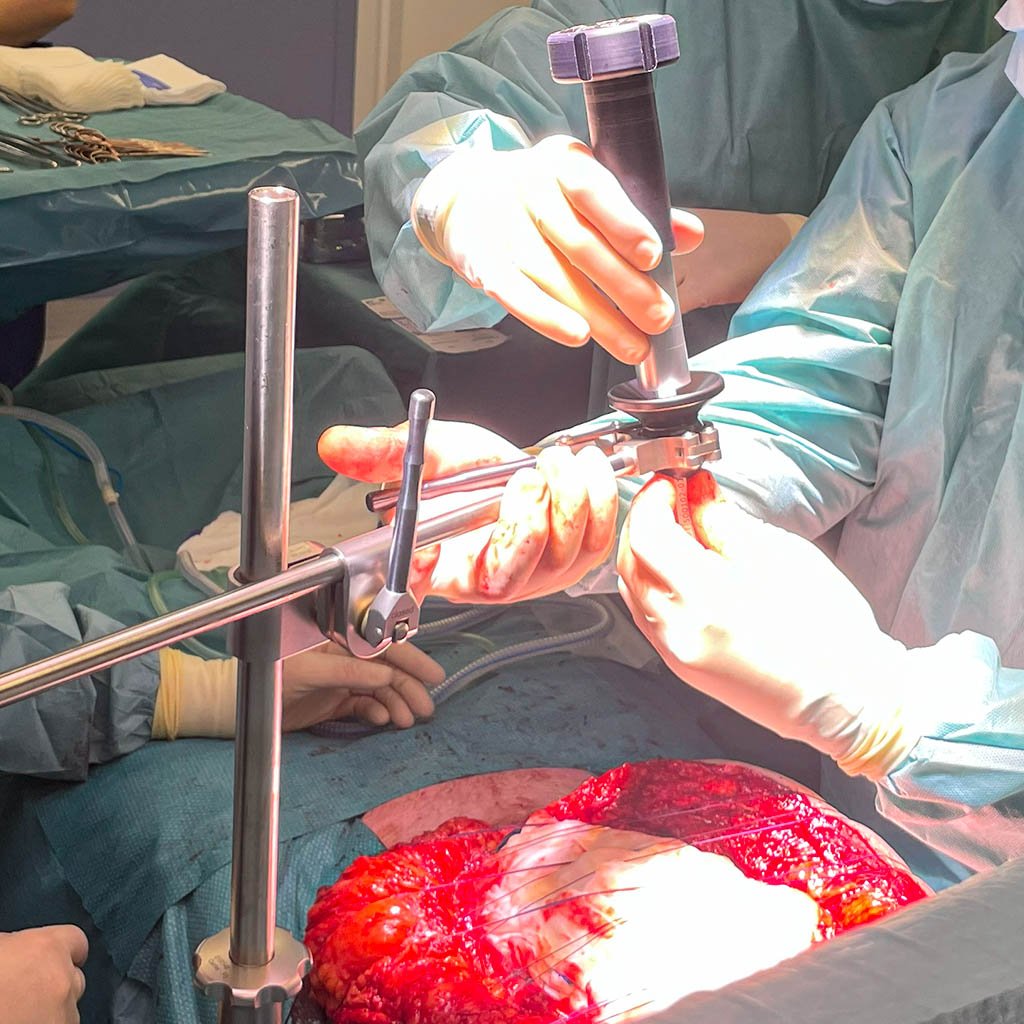
Setting up fasciotens®Hernia
Assembling the device took the surgeons only 3 minutes. It comes with the IFU, a Quick Guide and video explanation.
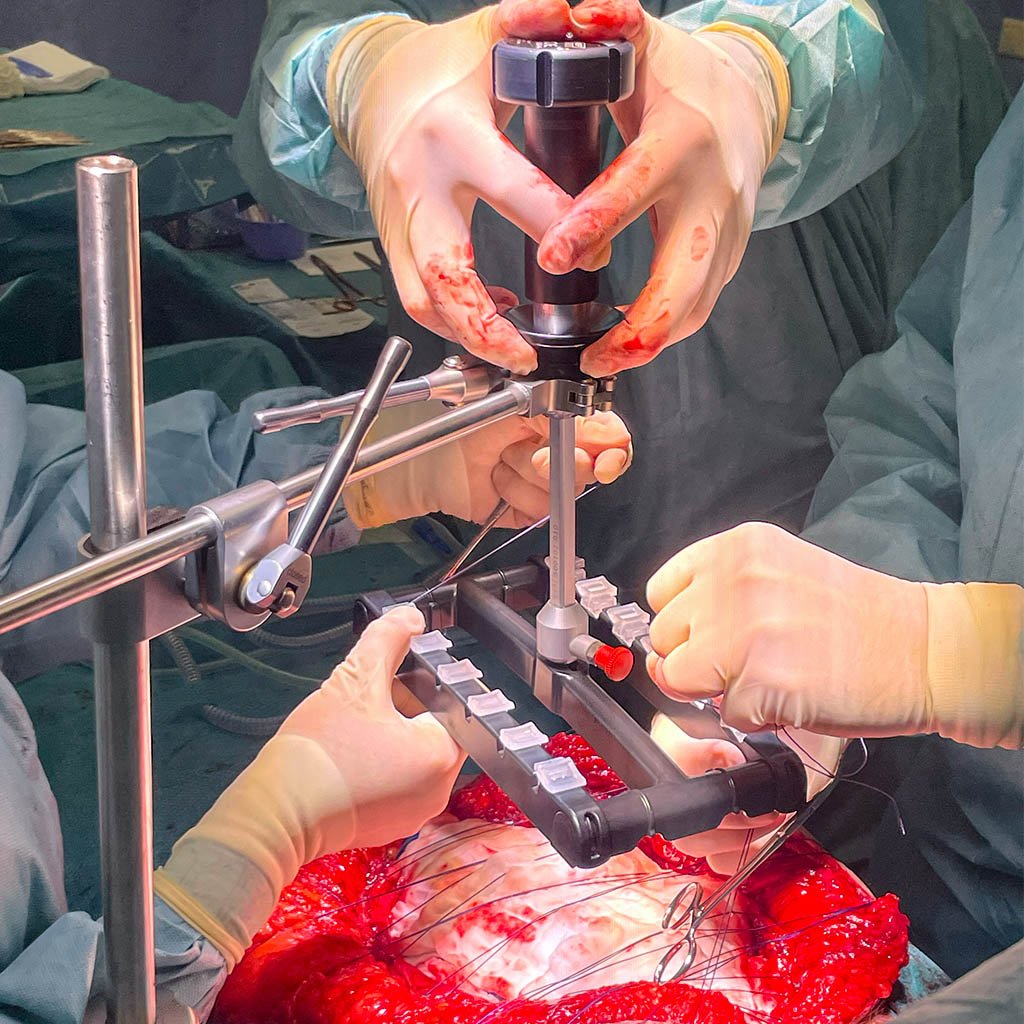
Connecting the sutures
Bastiaan brought the pre-tension to 14 units by pressing the traction controller down, while Susan attached the sutures to the retention frame. To keep the frame in balance she started with the corner sutures.
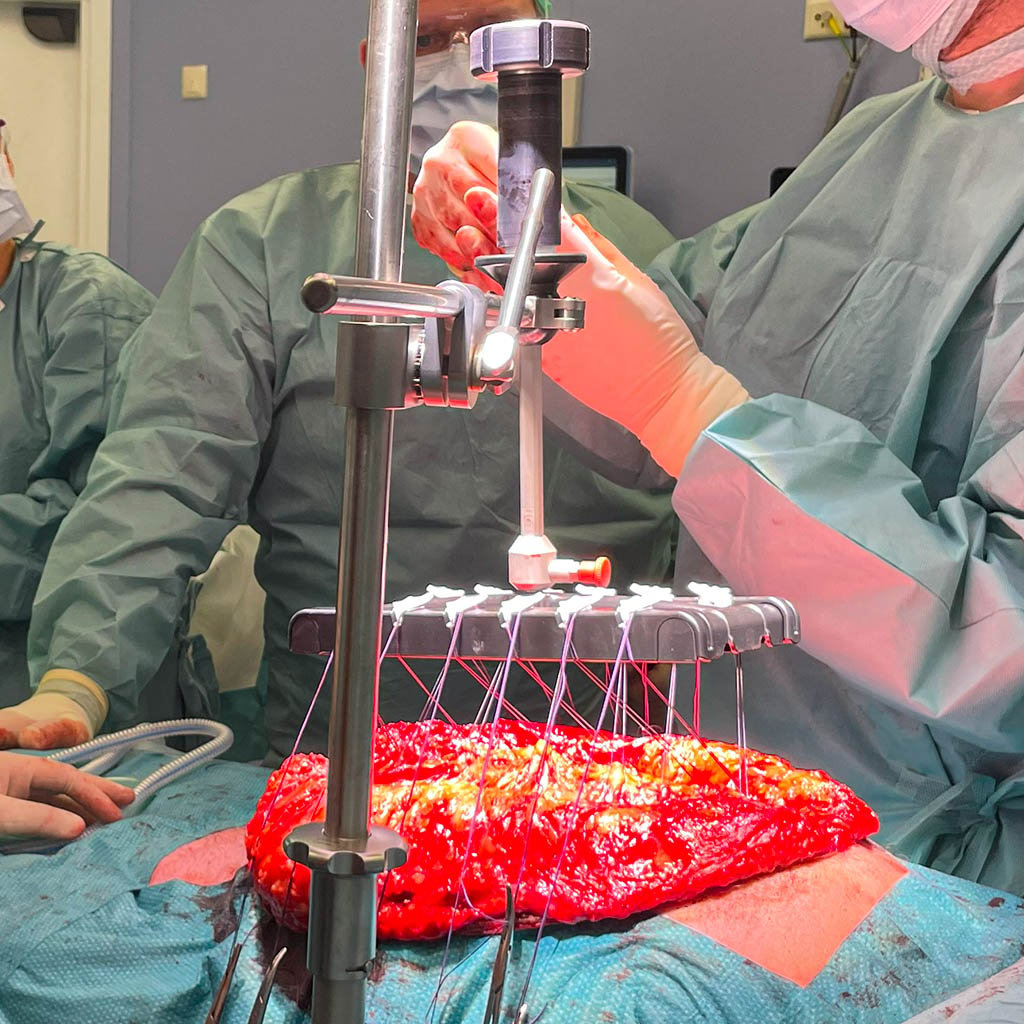
Device fully set up
Only after all 12 sutures were secured, Bastiaan carefully released the pre-tension. The device now applies the standardized traction, which was set to 14 units in this case.
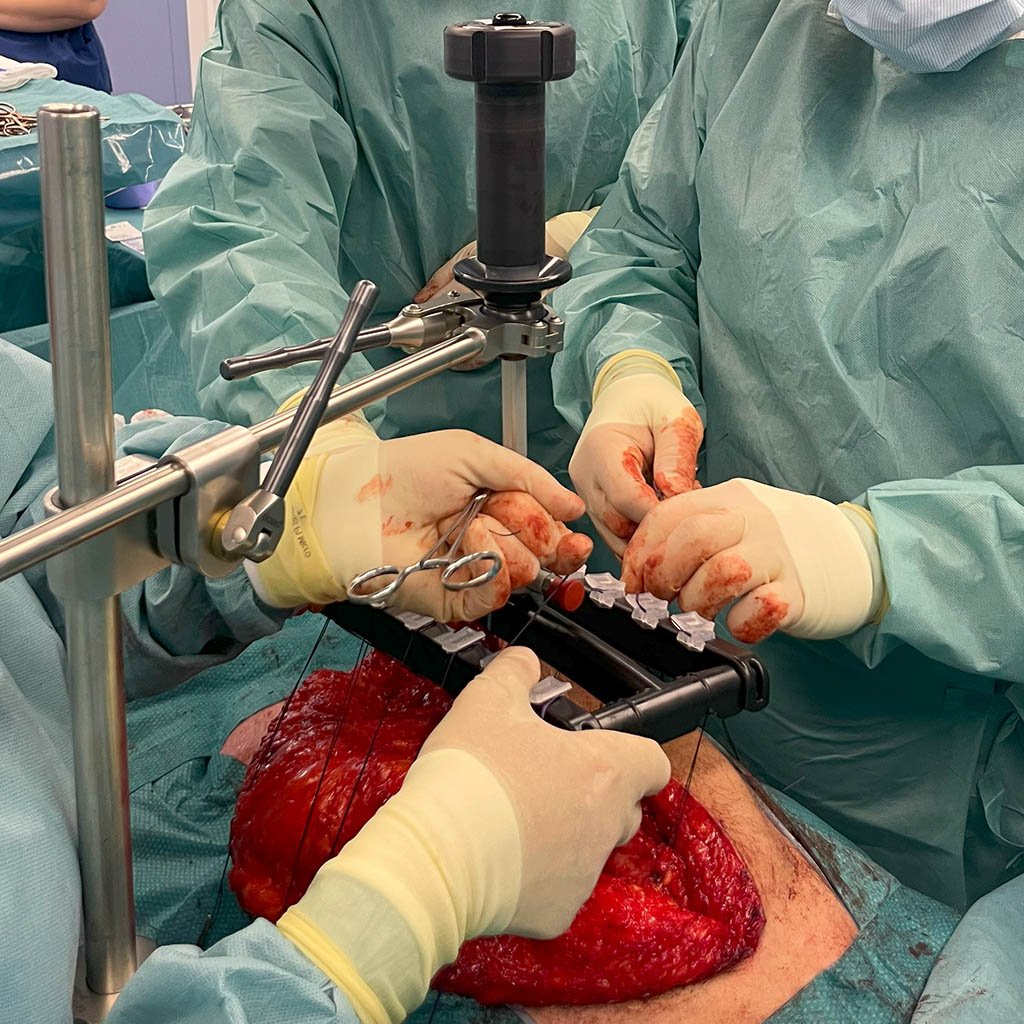
Re-tightening the sutures
Susan and Bastiaan checked each individual suture every 2 minutes and pulled them tight again if necessary. Over time some parts of the abdominal wall/fascia may stretch more quickly than others.
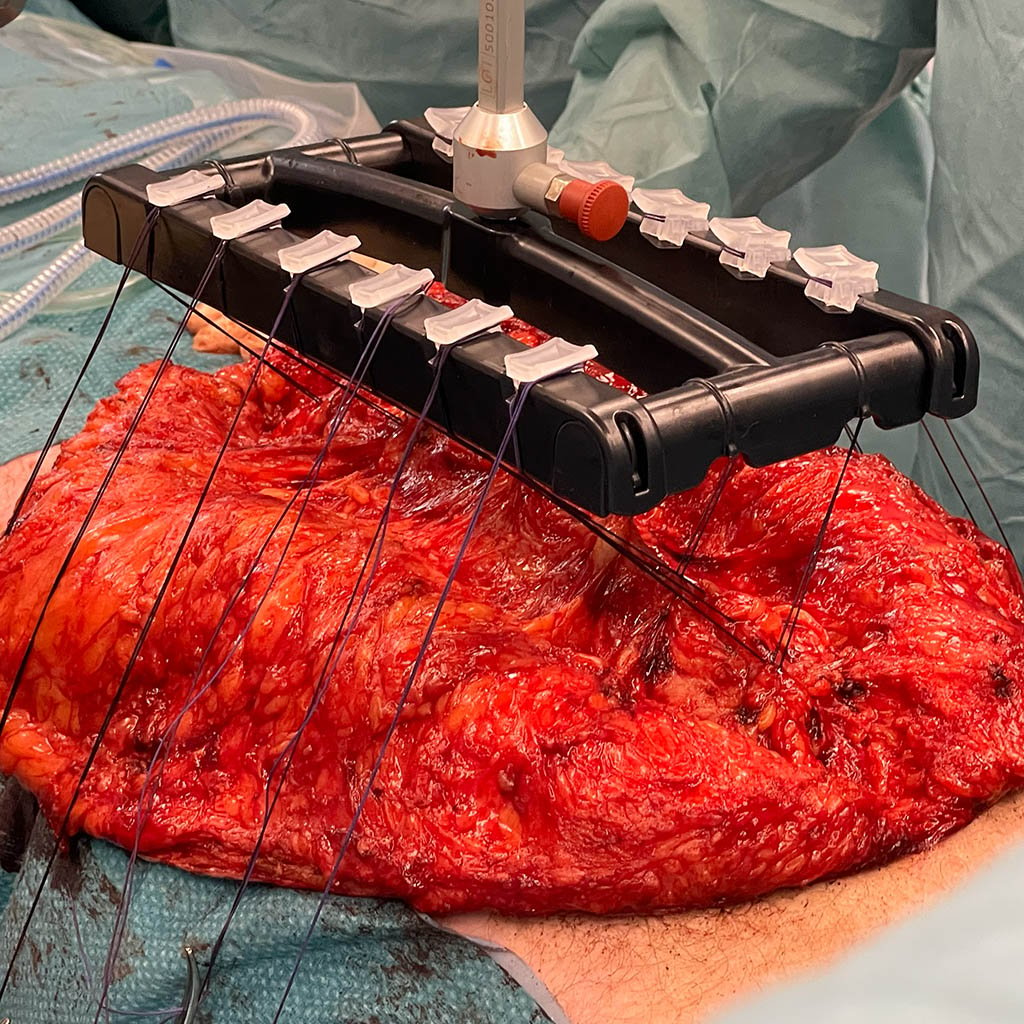
Fascial edges back in midline position after only 15 min
Due to the pre-treatment with BTA, the huge defect could have been closed after 15 minutes already. However, Susan and Bastiaan waited another 10 minutes to make sure that the fascia did not retract again during the mesh application. From our experience, in most cases the device can be removed after 30 minutes.
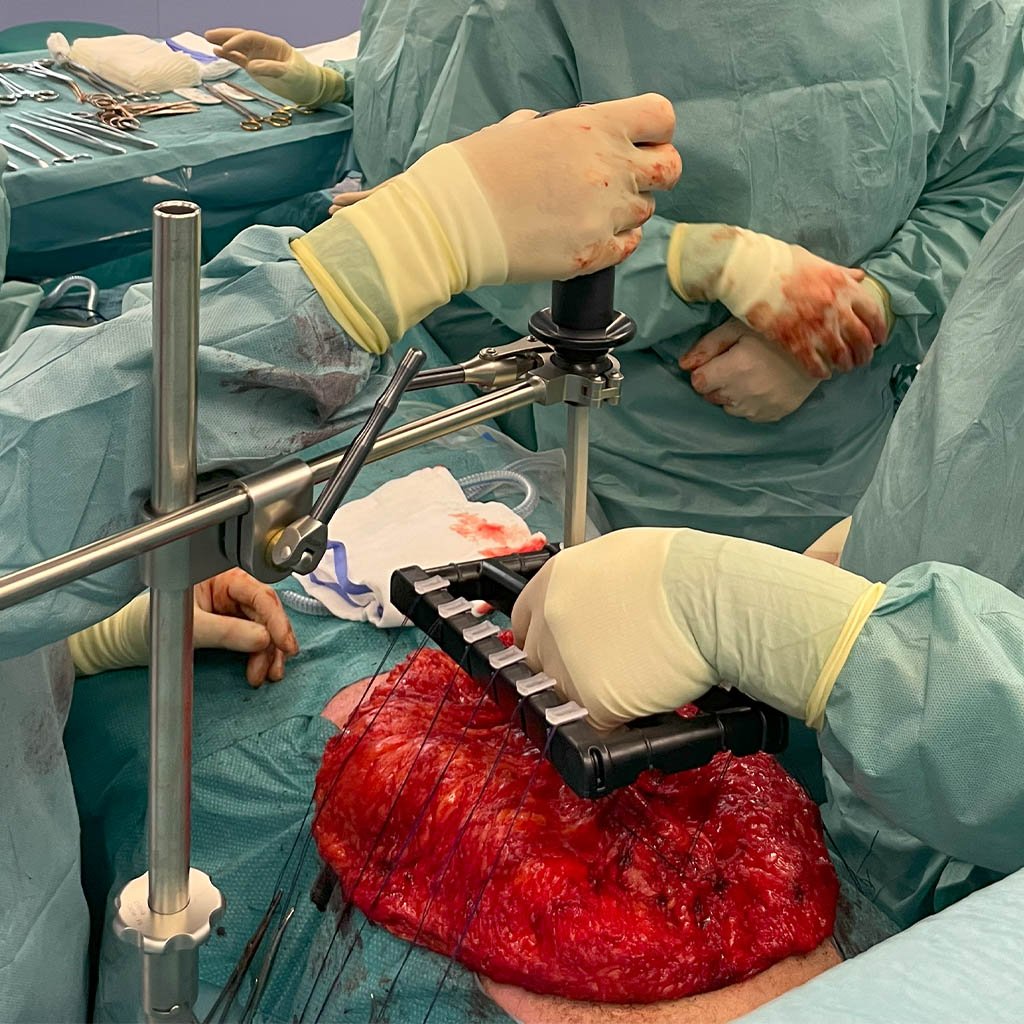
Disassembling the device
Bastiaan held the retention frame tightly while Susan released it. It is very important to follow this procedure as the frame will otherwise crash on the patient with full strength when released.
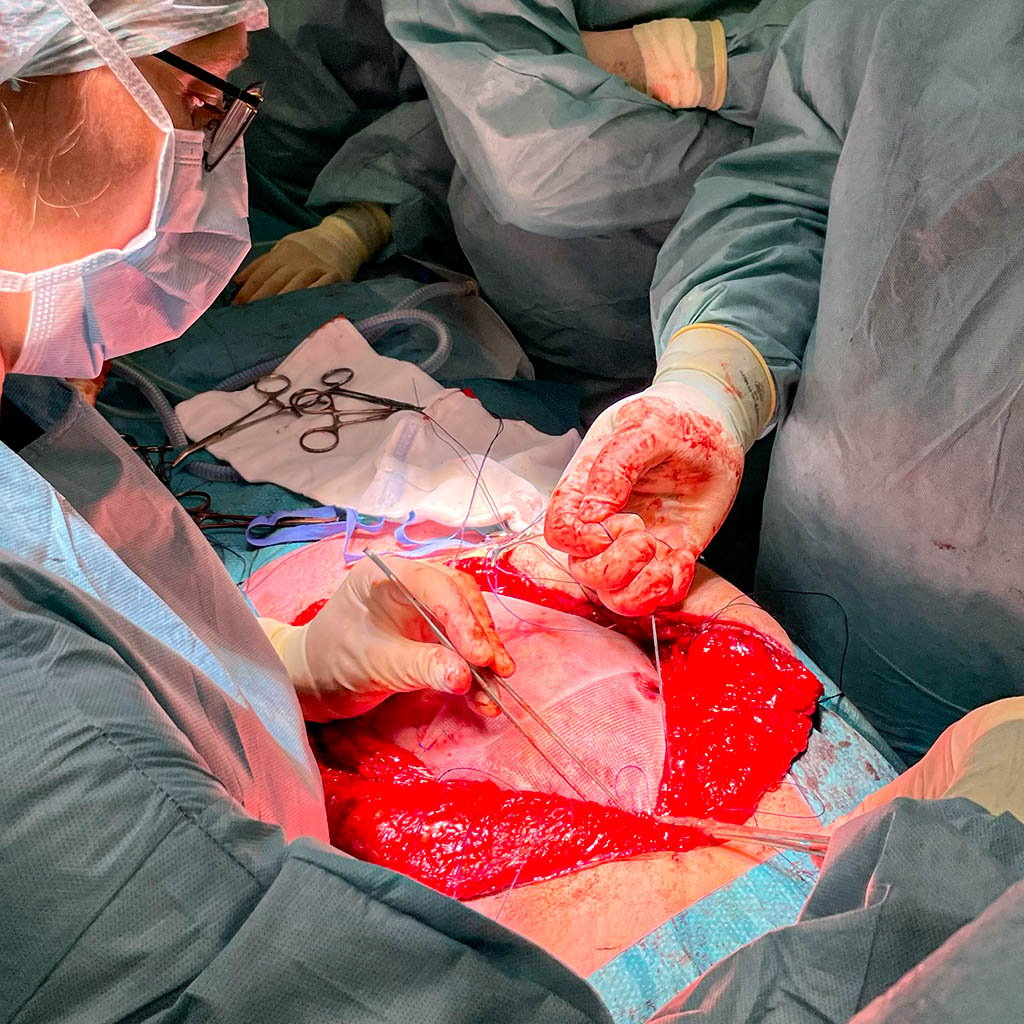
Inserting the mesh
The surgeons applied a polypropylene mesh in sublay position (retrorectus) following standard of care before closing the anterior rectus sheets.
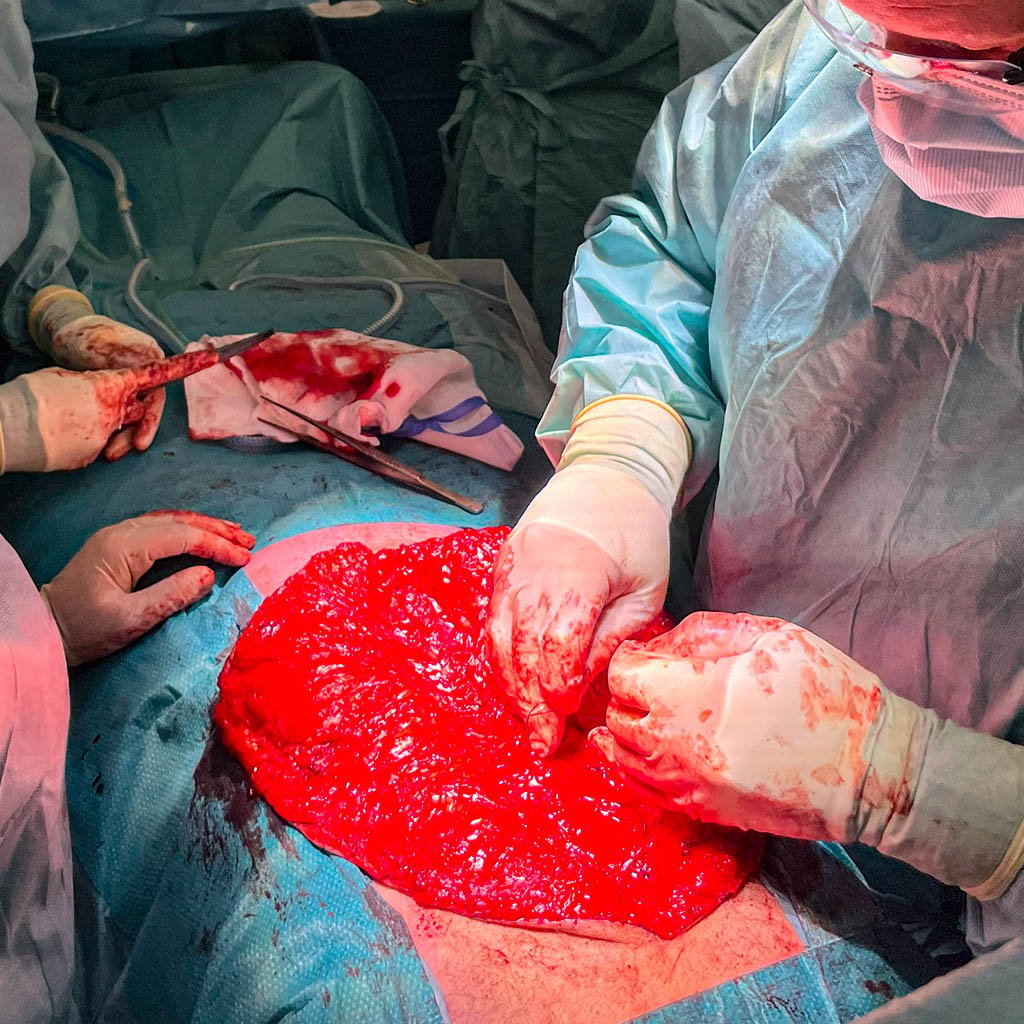
Midline closure
The anterior rectus sheets could be closed tension-free over the full length using a running suture (small steps, small bites). The surgeons used the sutures which connected the fascia with the Hernia device to pull the fascial edges towards each other to allow easier placement of the stitches.
Susan Lemson was pleased with the successful treatment
The leading surgeon Susan said that her first application of the fasciotens device exceeded her expectations as the midline could be restored after 25 minutes already - despite the huge defect of 25 cm / 8 cm under tensionStart with fasciotens yourself
